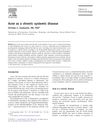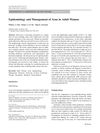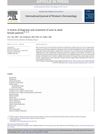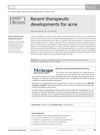Acne in Dark Skin: Prevalence, Presentation, and Treatment
January 2018
in “
Springer eBooks
”
acne vulgaris comedonal acne nodular acne postinflammatory hyperpigmentation insulin resistance associated acne IRAA HAIR-AN syndrome non-classic congenital adrenal hyperplasia NCAH steroid acne topical retinoids antibiotics hormonal anti-androgens isotretinoin acne hyperpigmentation insulin resistance acne HAIR-AN retinoids anti-androgens
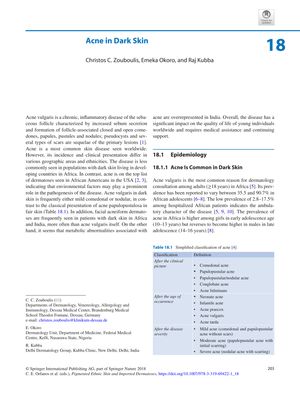
TLDR Acne in dark skin is influenced by environmental factors and can lead to hyperpigmentation, with various treatment options available.
The document from 2018 examines acne vulgaris in individuals with dark skin, noting that it is less common in dark-skinned populations in African developing countries but prevalent among African Americans, suggesting environmental factors influence its development. Acne presentation in dark skin often includes mild comedonal or nodular acne and varies in prevalence, with rates between 35.5% and 90.7% in African adolescents. The condition is multifactorial, with sebum production, hormonal imbalances, inflammation, and genetics playing roles, and lifestyle factors can exacerbate it. Postinflammatory hyperpigmentation is a frequent complication. In India, around 75% of urban acne patients have insulin resistance associated acne (IRAA), which is mild, comedonal, and less responsive to standard treatments, often leading to hyperpigmentation and less scarring. The document also discusses HAIR-AN syndrome and non-classic congenital adrenal hyperplasia (NCAH) as related conditions, and the prevalence of steroid acne in developing countries. Treatment options include topical retinoids, antibiotics, hormonal anti-androgens, and isotretinoin, with an emphasis on considering environmental factors in treatment plans.

